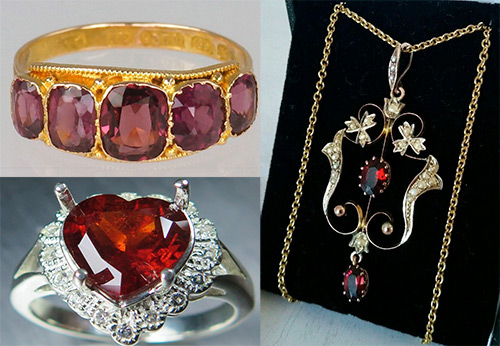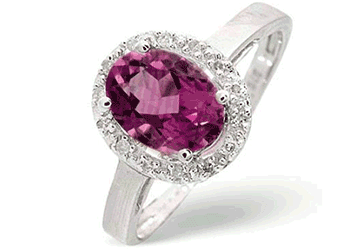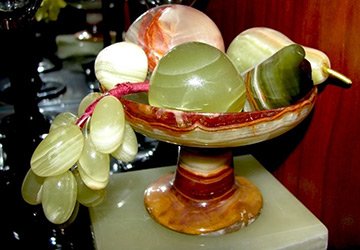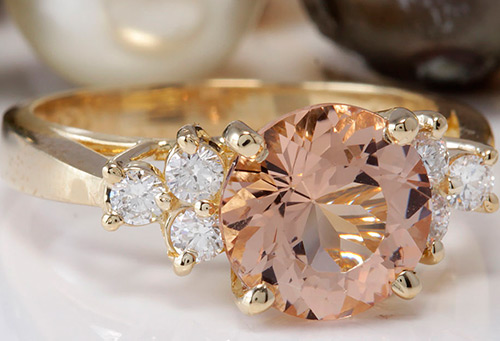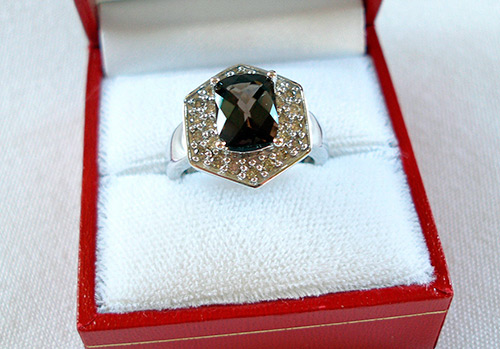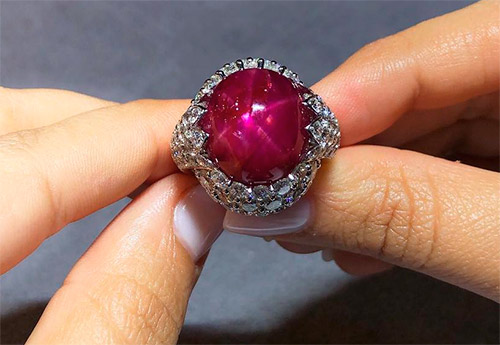Fashion Jewelry
Pyrope garnet - fire stone
When it comes to a pomegranate, bright red stones that look like flickering coals emerge in memory, which Pliny the Elder wrote about in his writings. But then they were called carbuncles. This extraordinary stone has long been credited with the ability to glow in the dark.
In the 11th century, Marbod of Rennes, bishop of the French city of Rennes, combining theology with a passion for mineralogy, wrote in his writings: “Shining stones are superior to all the carbuncle: HE is like coal, hot, rays in all directions, it seems, is the reason, that this is the name of this stone. "
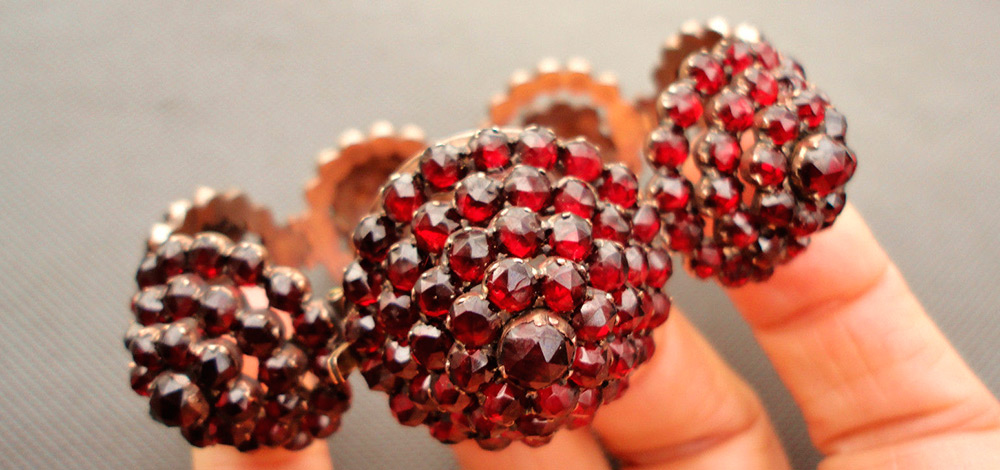
The beauty of a stone called carbuncle was also mentioned in the Bible. In the book of the prophet Ezekiel, the carbuncle, along with other precious stones, was used to denote the glory, greatness, beauty, purity of the eternal villages prepared by God in heaven ... - so it is said about him in the Biblical Encyclopedia of the XIX century, compiled by Archimandrite Nikifor, abbot of the male Moscow High Petrovsky monastery.
Thus, the carbuncle is synonymous with the modern pomegranate. And a bright red coal is its kind - pyrope. It is a variety, because the pomegranate family is numerous, of which there are no flowers ... Since 1803, the term "pomegranate" has been applied to a whole group of minerals, which have a general formula - X3Z2 (TO4) 3. Probably, you should not try to decipher the conditional symbols in this formula, because under each of them there are two or even more elements.
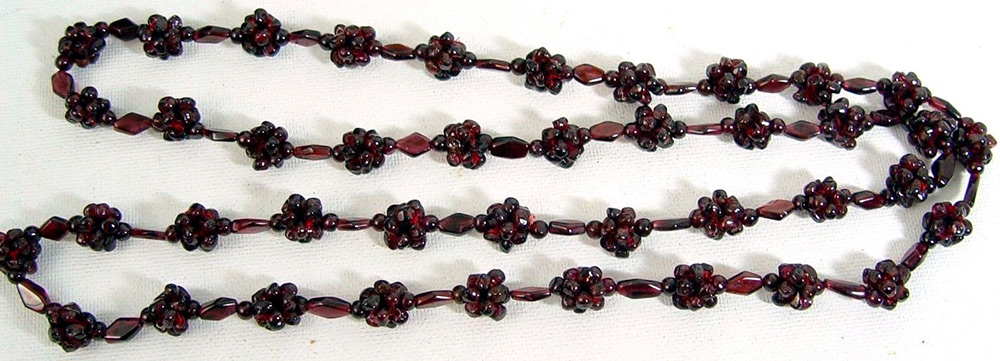
The most famous garnets should be considered almandine, andraite, hessonite, grossular, demantoid, pyrope, rhodolite, spessartine, topazolite, tsavorite, uvarovite, shorlomite ... Among them are stones of bright green, red, pink, cherry, yellow-green and even orange color, we can say - all the colors of the rainbow. Only the blue pomegranate is missing.
So, what kind of stone are we talking about?
On our page today one of the brightest varieties is pyrope. For many years, garnets were usually understood, and even today they are understood, only as transparent red stones. Pyrope is one of them.
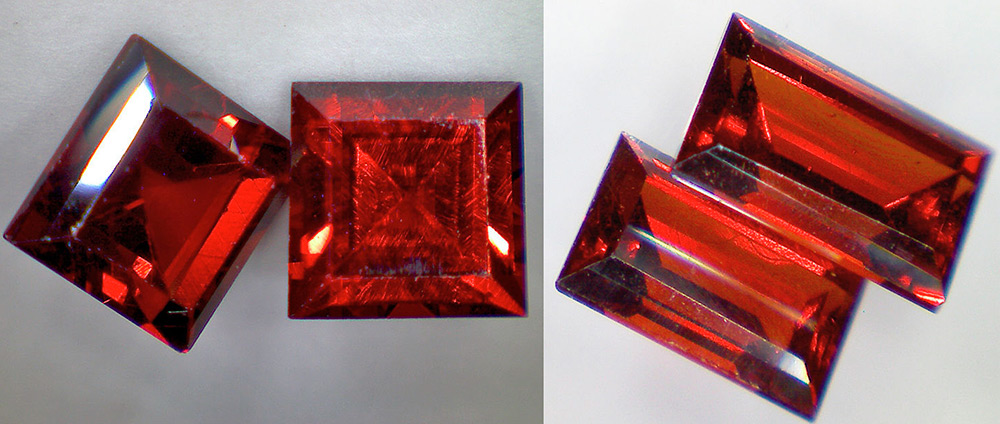
Red garnets came to the European jewelry markets from the Bohemian mines (Czech Republic). The most ancient jewelry with such garnets dates back to the X-XI centuries. In the Middle Ages they were called “Bohemian grenades”. The descriptions of that time say that these grenades were dark crimson, almost black, and only looking through them at a bright light could one see a red light.
Bohemian garnets were beautiful, and under Rudolf II, Prague became the main European center for stone processing. Czech and Austrian craftsmen were sensitive to their work, they had strict discipline, quality control was carried out.
Here is what N.S. Leskov: “There are a lot of colored stones in the Czech lands, but all of them are of low dignity and, in general, are much inferior to those of Ceylon and our Siberian ones. An exception is one Czech pyrope, or "fire grenade" ... There is no grenade anywhere better than it ... "
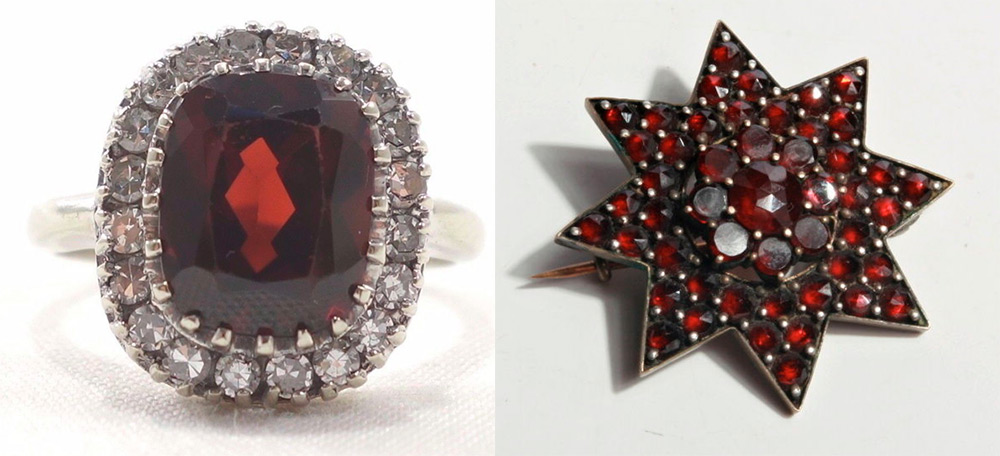
There are museums in the Czech Republic where you can see unique exhibits. In the town of Hradec Králov - the Museum of Eastern Bohemia, in the small town of Trebnitsa, in Prague itself, there are several museums, including the National. The Trebnitz Museum houses the world's largest pyrope garnet, the size of a pigeon's egg, weighing 468 carats.
A unique specimen belonged to Rudolf II. In the same museum, there is another famous exhibit - a set of garnet crystals in the Empire style, which consists of a five-strand necklace, two bracelets, earrings, a brooch and a ring. Fine jewelry creation contains 448 large pyrope crystals.
Who owned this headset? The owner's name is known. This is Theodora Ulrika Sophia von Levetsov. But that is not all.The main thing is that Johann Wolfgang Goethe gave her this headset. When he saw young Ulrika, he was 72 years old, the beauty captivated him. The poet with sincere feelings offered her his hand and heart, but the girl's mother was extremely outraged by such a courage of an already quite middle-aged poet, and Ulrika herself was also in no hurry to agree.
It all ended with the fact that in September 1823 in Carlsbad, Goethe saw Ulrika for the last time. Soon the poet wrote a lyrical Marienbad elegy, which ended with the words: "Rejected by her - I will perish, doomed." Ulrika lived to be 95 years old and married. So not all beautiful stones are conducive to happy love.
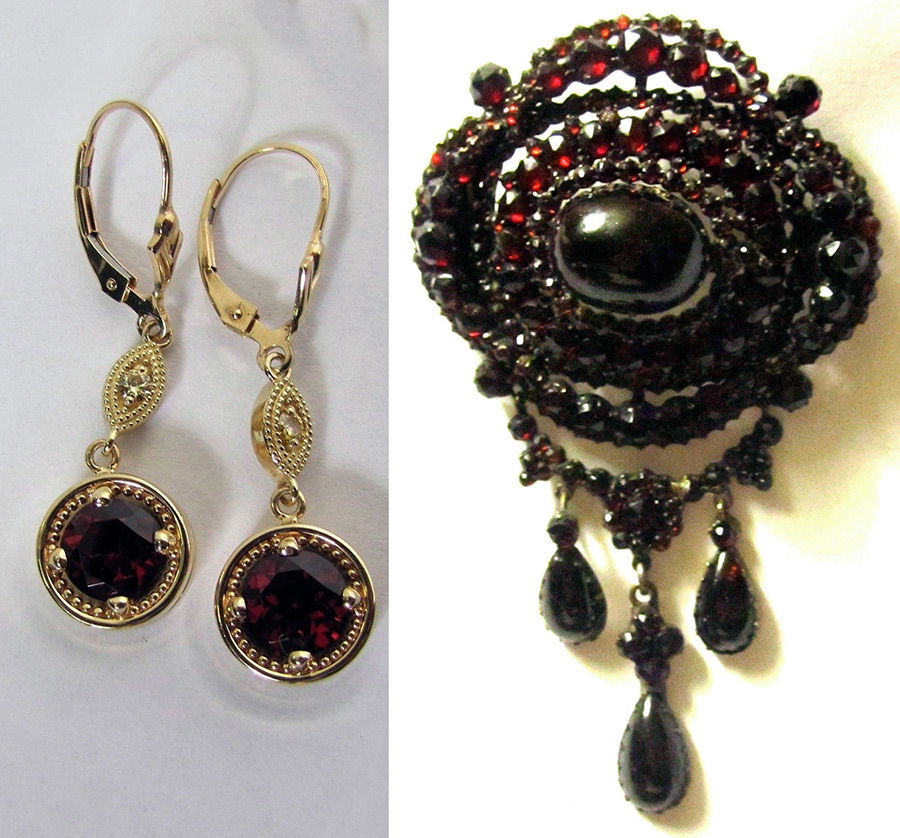
But the same pyrope garnet, or rather, a dark red necklace made of large garnets, became evidence of the long and happy love of the composer Bedřich Smetana with his wife. The necklace is considered one of the largest and most beautiful in the world, it is kept in the Bedřich Smetana Museum in Prague.
When you are in Prague, be sure to look at the curious exhibits of the National Museum, where you can get acquainted with the history of mining and processing of pyrope garnets. Many museums in the Czech Republic showcase unique products made from Bohemian pomegranates.
Deposits of pomegranates
In addition to Czech garnets, deposits are known in Austria, Australia, Argentina, Norway, South Africa, Brazil, Russia, Tanzania, India, Mexico, and the USA. There are grenades in Madagascar and Sri Lanka. But not all of the listed deposits are sources of pyrope garnets.
In Africa, garnets were mined in the Kimberley mines, along with the extraction of diamonds. Geologist Larisa Popugaeva noticed the connection between the deposits of garnets and diamonds. This is how a diamond deposit was discovered in Yakutia, pyrope garnets showed the way to diamonds.
Diamonds with garnets are so friendly that in many museums of mineralogy one can find amazing aggregates of diamonds and pyropes. Pyrope - one the most beautiful crystals... But it is in the Czech Republic that Bohemian pyrope garnets are the very perfection. The consistency of Bohemian pyropes is recognized by the whole world.

Properties of pyrope garnet
The stone, as already mentioned, looks like a coal that has not stopped burning. And the resemblance to a flame is so strong that almost all peoples noticed this smoldering light in the crystal, and the name for all was formed in comparison with the flame of coal. Translated from the ancient Greek pyropos - "like fire" (pyros - "fire").
The Mongols call pyropes - galyn chulluu - "fiery stone". And there are legends that claim that pyropes are frozen drops of dragon's blood, which can give strength and fearlessness to warriors. This is probably why, before the battle, the warriors of Tamerlane drank pomegranate juice from a bowl decorated with these stones.
Chemical formula of pyrope Mg3Al2 (SiO4) 3.
Pyrope has not only a thick dark red color of various shades, but also purple. Its luster is glassy or oily, the crystal can be transparent and translucent.
- Hardness 7 - 7.5,
- Cleavage imperfect, often absent
- Density 3.65 - 3.84 g / cm3,
The magical properties of pyrope
Indian esotericists believe that pyrope has a huge energy field, because it looks like fire or blood. Therefore, only strong and powerful people are worthy of wearing such a powerful crystal. Psychics claim that pyrope can become a talisman for lovers and warriors.
We already know how Goethe's pyrope helped in winning the heart of the young beauty. In ancient times, precious stones were shrouded in mystery, because people were attracted to them by an extraordinary power. Everyone tried to take possession of the stone, and therefore they believed that the stones have magical properties. Despite the bloody trail behind the precious stones, the desire to possess them did not stop anyone. And how can you not believe that the stone has magical attraction.
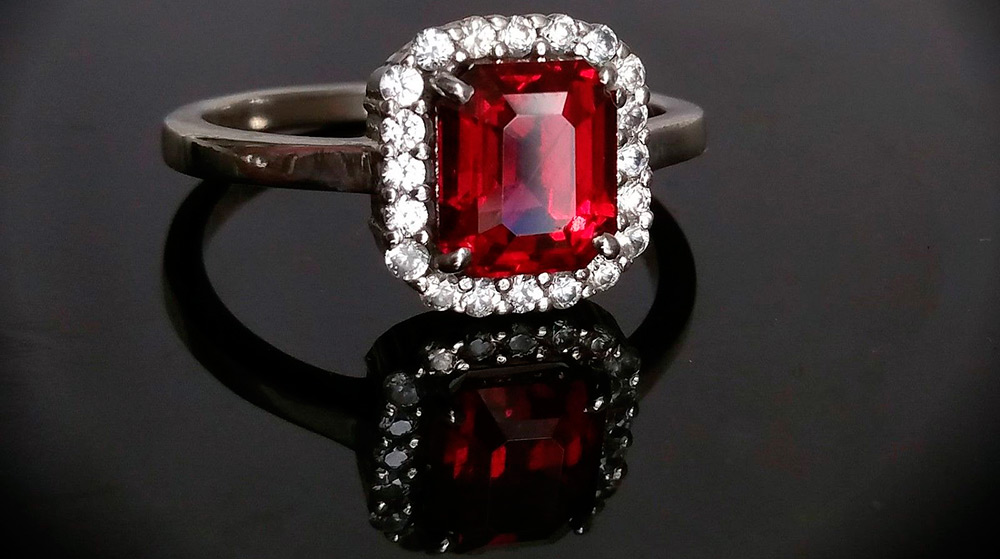
The healing properties of pyrope
Can stones be treated? They contain certain elements, and man is also a part of nature with the same elements. And therefore, most likely, they can have a beneficial effect on a person and, above all, with their beauty. Contemplating the beauty of nature, we cannot but rejoice.Therefore, stones can help, and only a good doctor can cure. And yet, lithotherapists claim to help pyrope to activate blood circulation.
Pyrope garnet jewelry
Pomegranate has been known since ancient times. Even then, in Egypt, Persia, Ancient Rome and Greece, its crystals were used in jewelry. Pyrope was used to decorate vases, bowls, and seals. They were inlaid with silver and gold dishes, and the warriors wore swords, shields and belts decorated with pomegranates.
Today, pyrope is used to decorate bracelets, earrings, brooches, rings, and of course, beautiful garnet necklaces and necklaces. Pyrope goes well with silver, gold and platinum.
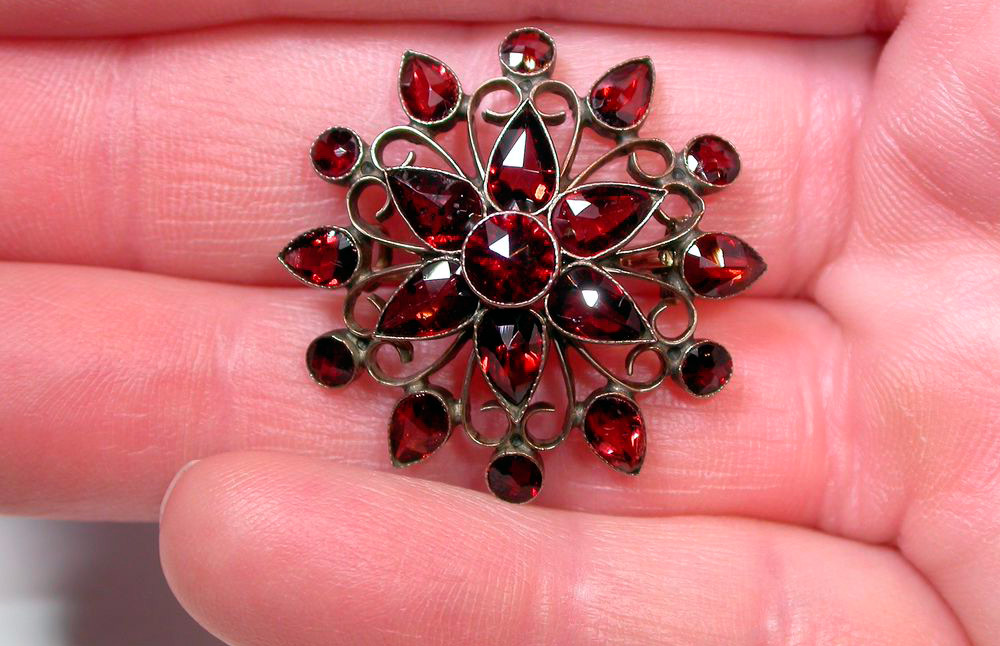
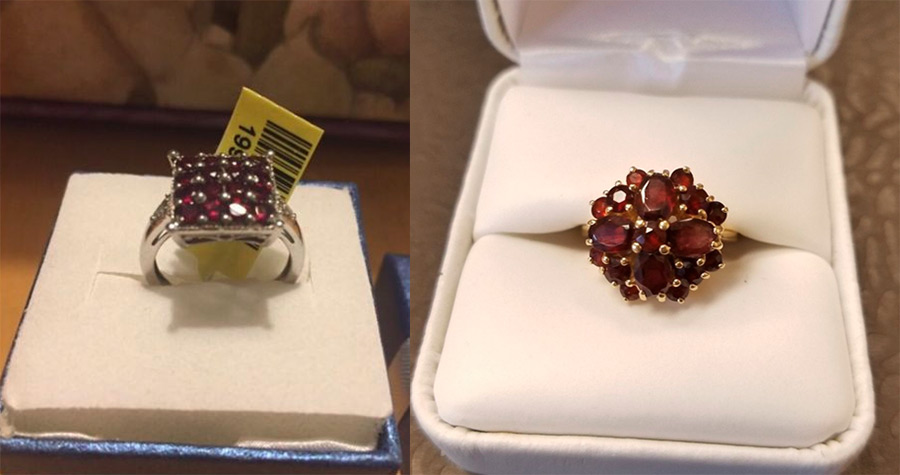
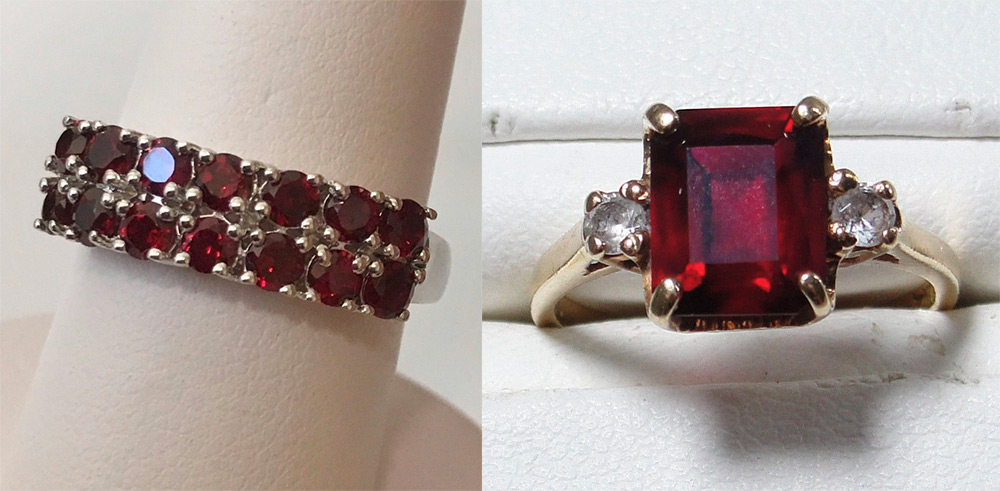
Comments and Reviews
Add a comment
Rating news
Shades of clothing that make women look younger
What shades of hair make women younger: rules and photos
Funny wedding dresses - photos and ideas
12 most expensive down jackets for the winter
How to look 25 at 40: tips from supermodels
Beautiful schoolgirls
Anti-aging haircuts and hairstyles for women
Fashionable skirts for autumn and winter
Fashionable women's trousers for the cold season
Fashionable and stylish sandals for summer 2024
Spring-summer 2024
 Fashionable dresses and tops with thin spaghetti straps
Fashionable dresses and tops with thin spaghetti straps
 Bandana tops: how to wear stylishly and beautifully
Bandana tops: how to wear stylishly and beautifully
 How to put together the perfect men's wardrobe for the summer
How to put together the perfect men's wardrobe for the summer
 Fashionable shorts for spring-summer 2024
Fashionable shorts for spring-summer 2024
 Fashionable skirts for spring-summer 2024: a guide to online shopping
Fashionable skirts for spring-summer 2024: a guide to online shopping
 The most fashionable dresses spring-summer 2024: styles and colors
The most fashionable dresses spring-summer 2024: styles and colors
 Fashionable total look 2024: ideas of images and trends
Fashionable total look 2024: ideas of images and trends
